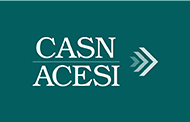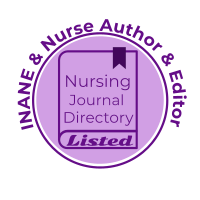Translated Title
Acceptée à Bella Bella : un exemple historique de formation des infirmières missionnaires en Colombie-Britannique de 1921 à 1925
Credentials
Sarah C Cook, MSN RN
Sonya Grypma, PhD RN
Abstract
This study explores the largely-unknown history of missionary nursing on British Columbia’s Northwest Coast between 1901 and 1925, built around the experience of nurse Doris Nichols. From 1903 until 1935 in the Haíɫzaqv (Heiltsuk) village of Wáglísla (Bella Bella) there existed a small but persistent school of nursing within a Methodist mission hospital. The hospital was built with the intention to bring spiritual and physical healing to local Indigenous people, however the medical missionaries served all in need along the central coast, and the nursing school sustained this mission. Nichols arrived at Bella Bella in 1921, where she began her training to become a nurse at the R.W. Large Memorial Hospital Training School for Nurses; she was likely one of two (possibly three) student at that time. The educational journey for a student at Bella Bella started with introductions into a tight missionary family and then included a wide range of nursing duties in-hospital, in the community, and even nursing on the water in the medical mission boat. In the 1920s the school was affiliated with the Vancouver General School of Nursing and all student wishing to obtain a Registered Nurse designation competed their third and final year in Vancouver, which was the case with Nichols.
This study used the methods of historical research, specifically guided by a social history framework, to critically examine a variety of primary sources to related to the experience of a missionary nursing student—who lived, learned, worked, and worshiped as a part of the Methodist medical mission in Bella Bella and beyond, while giving voice to the under acknowledged presence of nursing. The study reflected on those experiences from the historical intersections of ethnicity, class, region and religion. The exploration concludes that Doris Nichols’ unique opportunity and experience as a missionary student and nurse was interconnected with—and an extension of—the profound experiences of change that occurred for the Heiltsuk, the Methodist missions, nursing education, and Doris herself. The research also found that the Heiltsuk in-specific, and Indigenous people in-general were excluded from the nurses training program in Bella Bella. This is of significant historical relevance to educators and schools of nursing today, in the development of culturally sensitive curricula that acknowledges the historical impact nursing training has had on Indigenous/ settler relations and the role it still has in ensuring inclusive education.
Résumé
Cette étude explore l’histoire très peu connue des infirmières missionnaires sur la côte nord-ouest de la Colombie-Britannique entre 1901 et 1925, basée sur l’expérience de l’infirmière Doris Nichols. De 1903 à 1935, le village Haíɫzaqv (Heiltsuk) de Wáglísla (Bella Bella) abritait une école de sciences infirmières petite, mais persévérante, dans un hôpital de la mission méthodiste. L’hôpital avait été construit dans le but de soigner les blessures physiques et spirituels des Autochtones locaux; cependant, les missionnaires de l’hôpital ont soigné tous ceux dans le besoin le long de la côte centrale et l’école de sciences infirmières soutenait cette mission. Nichols est arrivée à Bella Bella en 1921, et a commencé sa formation d’infirmière à la R.W. Large Memorial Hospital Training School for Nurses; elle y était l’une des deux (peut-être trois) étudiantes à ce moment. Le parcours éducatif d’une étudiante à Bella Bella commençait par les présentations de la « famille » de missionnaires et comprenait une variété de tâches infirmières à l’hôpital, dans la communauté et même sur l’eau, à bord du bateau médical de la mission. Dans les années 1920, l’école était affiliée à la Vancouver General School of Nursing et toutes les étudiantes qui désiraient obtenir le titre d’infirmière autorisée terminaient leur troisième et dernière année à Vancouver, ce qui a été le cas de Nichols.
Cette étude utilise les méthodes de recherche historique, guidées par un cadre d’histoire sociale, pour examiner de façon critique une variété de sources primaires pour se rattacher à l’expérience des étudiantes infirmières missionnaires qui ont vécu, appris, travaillé et prié dans le cadre de la Mission méthodiste médicale à Bella Bella et ailleurs tout en donnant une voix à la présence trop ignorée des infirmières. L’étude s’est penchée sur ces expériences en examinant les intersections historiques de l’ethnicité, de la classe, de la région et de la religion. L’exploration conclut que l’opportunité unique et l’expérience de Doris Nichols comme étudiante et infirmière missionnaire étaient reliées aux expériences de changements profonds chez les Heiltsuk, misssions aux méthodistes, à la formation en sciences infirmières, et à Doris elle-même. La recherche a également démontré que les peuples autochtones Heiltsuk et ainsi que les Autchtones en général, étaient exclus des programmes de formation en sciences infirmières à Bella Bella. Cela représente un intérêt historique important pour les éducatrices et les écoles de sciences infirmières actuelles dans le développement de programmes culturellement adaptés et inclusifs qui reconnaissent l’impact historique de la formation des infirmières sur les relations entre les Autochtones et les colonisateurs.
Recommended Citation
Cook, Sarah C. and Grypma, Sonya
(2020)
"Accepted in Bella Bella: A historical exemplar of a missionary nursing education, in British Columbia from 1921-1925,"
Quality Advancement in Nursing Education - Avancées en formation infirmière:
Vol. 6:
Iss.
2, Article 10.
DOI: https://doi.org/10.17483/2368-6669.1224



